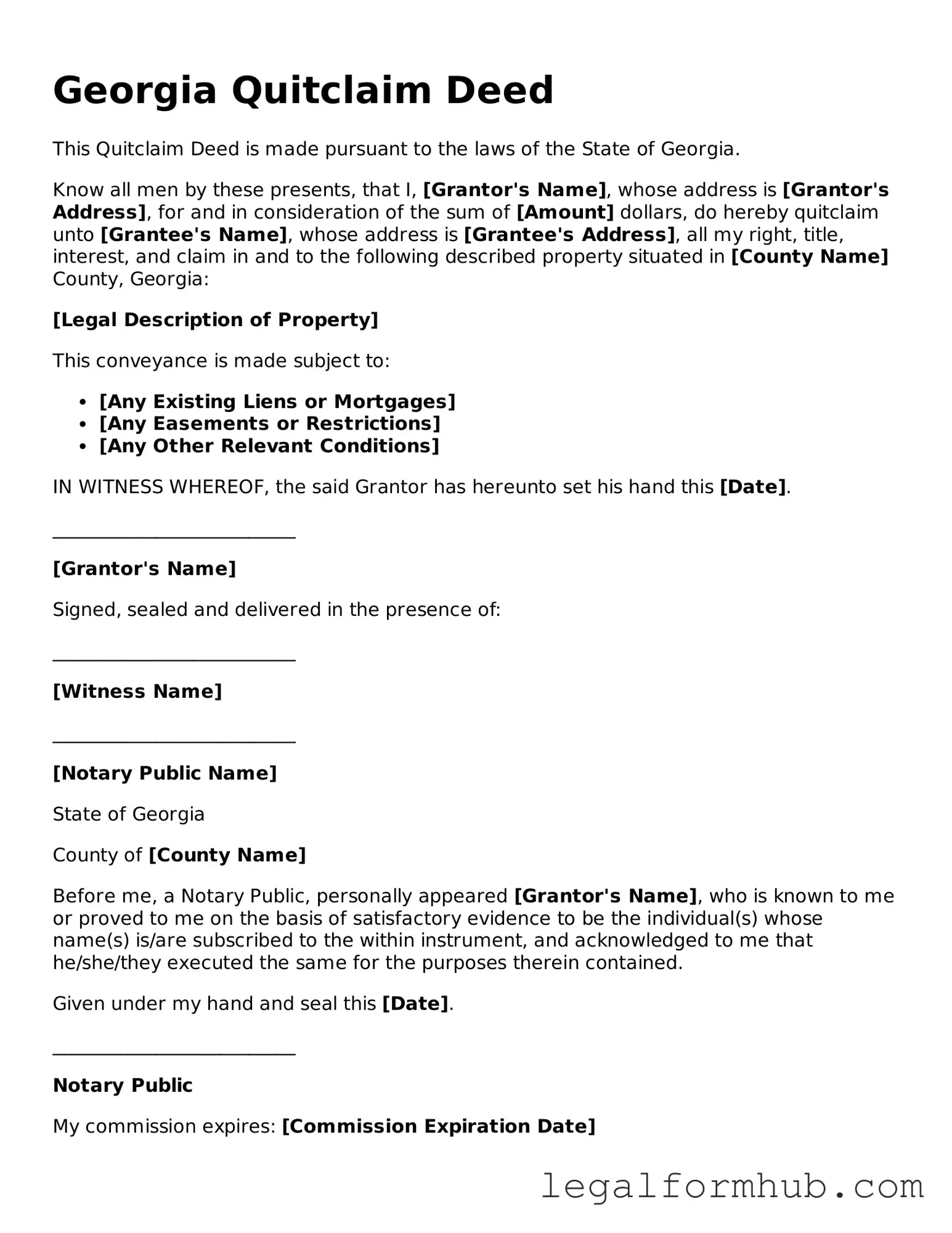A Warranty Deed is similar to a Quitclaim Deed in that both are used to transfer property ownership. However, a Warranty Deed offers a guarantee from the seller regarding the title’s validity. The seller assures the buyer that they have clear title to the property and the right to sell it. This added layer of protection can provide peace of mind for the buyer, as it includes warranties against future claims. In contrast, a Quitclaim Deed does not provide any such guarantees, making it a more straightforward, but riskier, option for transferring ownership.
A Bargain and Sale Deed also resembles a Quitclaim Deed in its function of transferring property. This type of deed implies that the seller has ownership and the right to sell the property, but it does not guarantee that the title is free of defects. Unlike a Quitclaim Deed, a Bargain and Sale Deed may offer some assurances about the seller’s ownership but lacks the full warranties found in a Warranty Deed. Buyers should be aware of the potential risks associated with this type of deed, as it does not protect against future claims on the property.
A Special Purpose Deed is another document that shares similarities with a Quitclaim Deed. This type of deed is often used for specific transactions, such as transferring property between family members or in divorce settlements. Like a Quitclaim Deed, a Special Purpose Deed does not provide warranties regarding the title. Its primary function is to facilitate the transfer of ownership without the complexities of a traditional sale. Parties involved should ensure they understand the implications of using this type of deed, as it carries similar risks as a Quitclaim Deed.
Understanding the nuances of property transfer documents is crucial for both buyers and sellers. Each type of deed, such as the Warranty Deed, Quitclaim Deed, and Grant Deed, serves a specific purpose and offers different levels of protection. For those involved in employment verification, similar attention to documentation is paramount. To learn more about essential forms used in this regard, including the Employment Verification form, you can visit Fill PDF Forms to begin the process.
An Executor’s Deed is used in the context of estate administration and shares some characteristics with a Quitclaim Deed. When a property is transferred by an executor of an estate, this deed serves to convey the property to the heirs or beneficiaries. Like a Quitclaim Deed, an Executor’s Deed does not provide any warranties about the title. It simply transfers whatever interest the deceased had in the property. This lack of guarantees can leave beneficiaries exposed to potential title issues, making it essential for them to conduct thorough due diligence.
A Deed in Lieu of Foreclosure is another document that functions similarly to a Quitclaim Deed. This type of deed is used when a homeowner voluntarily transfers the property to the lender to avoid foreclosure. Like a Quitclaim Deed, it does not offer warranties about the title. The lender accepts the property in exchange for forgiving the remaining mortgage debt. While this can be a beneficial option for homeowners facing financial difficulties, it is crucial to understand the implications and potential risks involved, especially regarding any existing liens or claims against the property.
